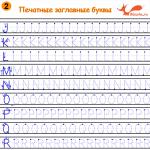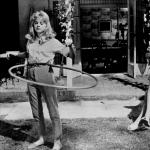What to do if the wrist has grown incorrectly. Incorrectly healed fracture - methods of surgical treatment
After a broken arm, the question of proper bone fusion worries every victim. After all, from an incorrectly applied plaster, when the hand is not fixed in an anatomical position, a kind of deformity can occur, namely, improper bone fusion. However, this situation may be influenced by other factors.
The fracture can heal incorrectly in any part of the body. However, the most mobile parts, such as fingers, hands and jaw, are more prone to deformed fusion. For example, improperly fused bones on the leg are much less common in life.
After an injury has occurred, the body begins to immediately solve the problem, namely, a healing process is formed. At the first stage, those tissues that died during the injury (dead particles) are absorbed, and already at the second stage, the bone is restored.
It takes time for the bone to heal completely. In the first week, a special connective tissue (granulation). How to fix fusion deformation? In fact, each case is individual and requires a special approach.
Why does the bone heal incorrectly?
As we know, fractures are of two types: open and closed. In the second case, not everything is so dangerous, the bone often heals well, but with an open fracture, conditions such as osteomyelitis or wound infection can develop. Usually, the bone grows together incorrectly with illiterately prescribed treatment and in such cases:
The bone is displaced in the cast (incorrect fixation);
made a mistake in establishing the diagnosis (fracture site);
the clamps were installed incorrectly during the operation;
have not installed loops that are designed to reposition the bone.
Therefore, if the victim, after fixing the fracture, feels pain syndrome, discomfort and similar signs, you should immediately contact a traumatologist, since the symptoms are a sign of improper bone fusion.
Surgery
This radical recovery method is only used when alternative medicine is powerless. Basically, through the operation, especially severe fractures are eliminated, as well as errors from incorrectly prescribed treatment, which led to deformed bone fusion, are corrected. Orthopedic interventions are of several types:
Corrective osteotomy;
bone resection (marginal);
osteosynthesis.
Let's talk about all types of surgery in more detail.
Corrective osteotomy
Such a manipulation is performed only under general anesthesia. The purpose of the operation is to eliminate bone deformation. To restore the anatomical shape, doctors can use laser or radio waves to dissect the bone, as well as surgical instruments. The bone is broken, and then fastened again, but in the correct position, fixing with screws, knitting needles, etc.
Osteotomy types
The operation is open and closed. In the first case, the skin is cut 10 to 12 centimeters to expose the deformed bone. Then the surgeon separates the bone from the periosteum and dissects it. The private method is more dangerous. The skin is incised by 2-3 cm. The bone is incised only by 3/4, the rest is broken. In the course of such an operation, both large vessels and nerves can be damaged.
The contraindications are as follows:
Pathological conditions internal organs;
pathological conditions heart and blood vessels;
chronic ailments in an exacerbated stage;
infection of tissues and organs.
Complications after surgery are not uncommon. Among the most common:
Introducing infection into open wound a patient during surgical procedures;
slowing bone fusion;
the formation of a false joint.
Osteosynthesis: what is this operation
 Quite a popular method for changing bone deformities. In this case, surgeons attach fragments of the broken bone to one another using various fixators (screws, screws, knitting needles, etc.). These implants accelerate bone healing and allow it to fully recover. Osteosynthesis is of two types:
Quite a popular method for changing bone deformities. In this case, surgeons attach fragments of the broken bone to one another using various fixators (screws, screws, knitting needles, etc.). These implants accelerate bone healing and allow it to fully recover. Osteosynthesis is of two types:
1. Transosseous (external).
2. Internal (submersible).
The presented type of operation is recommended to be done when it is necessary to connect the long tubular bones of the leg (thigh, lower leg), arms, and foot. Fixation in this method is done carefully enough that allows the bones to grow together in the correct position, without displacement.
Contraindications include:
Severe condition of the patient;
wound infection;
open fracture (large area of \u200b\u200bdamage);
osteoporosis.
Among the complications, damage to nearby tissues and blood vessels can be noted. Also, the use of screws and screws will weaken the bone itself.
Partial bone resection
In this case, the damaged area of \u200b\u200bthe bone is removed. Resection as an operation can be independent (no other operations are required after the intervention) and staged (is a stage before another operation). The presented type of operation is of two types:
Transperiosteal;
subperiosteal.
The choice of surgery depends on the type of bone injury. The operation is performed under general or local anesthesia.
Content of the article: classList.toggle () "\u003e expand
Fracture radius hands are considered one of the most common injuries.
It accounts for almost 16% of all injuries in the home. It is especially common in women during menopause.
The first mention of the fracture can be found in ancient medical treatises in Egypt and China. Even then, ancient healers paid attention to this type of injury, and made recommendations for the treatment and rehabilitation of victims.
Radial fracture at a typical site
Traumatologists have such a concept as "fracture of the beam in a typical place." This is due to the fact that the vast majority of fractures (almost 75%) occur in the distal part of the bone (located closer to the hand).
A fracture of the middle and proximal (located closer to the elbow) part of the radius occurs in only 5% of cases.
There are two types:
- Smith, or flexor. It happens when a person falls on a hand bent towards the back of the forearm. As a result, the bone fragment of the radius is displaced to the outer surface of the forearm;
- Wheels, or extensor. Occurs when the victim falls on the palmar surface of the hand. As a result, overextension of the wrist joint takes place, and the bone fragment is displaced towards the dorsum of the forearm.
As you can see from the description, the Smith fracture and the Wheel are mirror images of each other.
Trauma classification
Depending on the nature of the occurrence:
- Pathological - arise not so much under the influence of mechanical force, but as a result of a decrease in bone mineral density. The disease, the striking manifestation of which is pathological fractures, is called osteoporosis;
- Traumatic. They arise as a result of the impact on the bone of any mechanical factor: impact, fall, twisting, excessive exercise stress and etc.
Depending on the violation of the integrity of the skin:
- Closed fracture of the radius of the hand, when the skin over the site of injury is not damaged;
- Open. In this case, the integrity of the skin is broken, and bone fragments come out.
Depending on the fault line:

Any type of fracture can be with or without displacement of bone fragments.
There is also an anatomical classification:
- Fracture of the diaphysis (body) of the bone;
- Intra-articular fracture of the head and neck of the radius;
- Fracture of the styloid process.
Symptoms
The trauma is accompanied by a rather bright clinical picture. The main signs and symptoms of a broken arm are as follows:

First aid for a fracture of the radius of the hand
 There are three basic steps that must be followed when providing first aid. These include:
There are three basic steps that must be followed when providing first aid. These include:
- Early immobilization (immobilization) of the injured limb;
- Adequate pain relief;
- Local exposure to cold;
Immobilization of the injured limb is the first step in first aid. Correct limb fixation performs several tasks at once:
- Minimizes additional bone displacement;
- Reduces the risk of soft tissue damage by fragments;
- Reduces pain.
Before immobilization, it is important to free your hand from rings, watches, bracelets, etc. Otherwise, they can cause compression of blood vessels and nerves. To give a fixed limb a physiological position, it must be bent at the elbow joint at an angle of 90 degrees and brought to the body by turning the hand up.
To minimize pain, you can use drugs from the NSAID group (non-steroidal anti-inflammatory drugs). These include diclofenac, ibuprofen, ketonal, dexalgin, celebrex, etc. These drugs can be taken in tablet form or as intravenous and intramuscular injections.
Local application of cold also reduces pain. In addition, under the influence of low temperature, vasoconstriction occurs and tissue edema decreases.
It is necessary to use cold for pain relief carefully so as not to provoke frostbite. For this, heating pads or ice packs are wrapped in a towel before use.
Diagnostics
 Radiation diagnostic methods are the "gold standard" in the diagnosis of fractures. X-ray of the limb in two projections is most often used in routine practice.
Radiation diagnostic methods are the "gold standard" in the diagnosis of fractures. X-ray of the limb in two projections is most often used in routine practice.
An X-ray will show not only the presence of a fracture, but also its nature, the presence of fragments, the type of displacement, etc. These data play a key role in the choice of treatment tactics.
Sometimes traumatologists use computed tomography to diagnose complex injuries.
Treatment of fractures of the radius
Treatment tactics directly depend on the nature of the damage and in each case is selected individually.
In the case of a bone fracture at a typical site, treatment consists of closed reduction (“assembly”) of the bone fragments and application of a plaster cast to avoid displacement. Usually, the cast covers the hand, forearm and lower third of the shoulder.
How much to wear plaster cast for a fracture of the radius of the hand? Immobilization lasts, on average, 4-5 weeks... Before removing the plaster cast, a control X-ray is mandatory. This is necessary to assess the fusion of the bone fragments.

Sometimes it is impossible to heal an injury with a plaster cast alone. Then resort to the following methods:
- Percutaneous fixation of fragments with wires. The advantage of the method is its speed and low invasiveness. However, with such treatment, it is impossible to start early development of the wrist joint;
- Open reduction of bone fragments using metal structures. In this case, the surgeon makes an incision in the soft tissues, compares the bone fragments and fixes them with a metal plate and screws.
Unfortunately, surgical methods have a number of negative points... First of all, it is the risk of wound infection. Therefore, after the operation, it is necessary to drink a course of broad-spectrum antibiotics. Second disadvantage surgical treatment fractures is a long period of rehabilitation.
Recovery time
The duration of the recovery period depends on the complexity of the injury and is, on average, 6-8 weeks. The duration of recovery is influenced by factors such as the scale of the operation, the speed of wound healing, the state of immunity, the presence of diseases bone tissue and etc.
Often, the recovery process after a fracture of the radius is delayed due to the fact that patients neglect the recommendations of doctors, in particular, they remove plaster casts on their own ahead of time. This is fraught with a number of complications, which will be discussed below.
If, after removing the plaster, the arm is swollen - this is a normal process, you can learn how to get rid of the swelling after a broken arm.
Rehabilitation and how to develop an arm after a radius fracture
Rehabilitation after a fracture should be carried out in a comprehensive manner and include massage, physical therapy, as well as physiotherapy exercises. The success of treatment largely depends on how responsibly the person approaches each of the listed activities.
Massage
 You can start the restoration of the limb with a massage. Correctly performed massage after a fracture of the radius has an analgesic effect, improves recovery processes, and also prevents muscle wasting.
You can start the restoration of the limb with a massage. Correctly performed massage after a fracture of the radius has an analgesic effect, improves recovery processes, and also prevents muscle wasting.
Start with a shoulder massage, then work with elbow joint, and only after that they move on to massage the areas around the injury. Finally, a hand massage is performed. The duration of the massage session is about 15 minutes.
Physiotherapy methods
Physiotherapy plays an important role in rehabilitation. The following procedures are used:
- Electrophoresis with calcium preparations. The essence of electrophoresis is reduced to the slow directional movement of particles medicinal product deep into the tissues. Calcium increases bone mineral density and accelerates the fusion of bone fragments;
- Low-frequency magnetotherapy. Has analgesic and anti-inflammatory effects;
- UHF method. This technique is aimed at warming up soft tissues. As a result, local metabolism improves, which accelerates regeneration;
- Ultraviolet radiation. Under the influence of ultraviolet radiation, vitamin D is produced, which is necessary for better absorption of calcium.
Exercise therapy classes
As a result of prolonged immobilization, the muscles lose their tone, which is fraught with the development of hypotrophy. That is why timely initiation of exercise therapy is so important for fracture of the radius. Classes should start with the simplest exercises, for example, with alternate flexion of the fingers. The doctor will write out an exercise diagram on how to develop the arm after a fracture of the radius.
Exercises after a fracture of the radius should be performed carefully, without sudden movements.
It is important to carry out exercise therapy under the guidance of a specialist who will select a set of exercises in accordance with the physical capabilities of the patient and monitor the correctness of its implementation.
Complications and possible consequences
They can be divided into two groups: direct complications of trauma and its long-term consequences.
Immediate complications of injury include:
- Damage to the nerve bundle (eg, rupture). It entails a violation of sensitivity (thermal, tactile, motor, etc.);
- Damage to the finger tendons, as a result of which the function of flexion or extension of the hand may be impaired;
- Damage to blood vessels with hematoma formation;
- Partial or complete muscle rupture;
- Infectious complications (for example, the attachment of infection to the wound surface).
Long-term complications are less common. These include osteomyelitis (purulent fusion of the bone), deformity of the limb due to improper fusion of bone fragments, the formation of contractures.
Features of a fracture of the radius in a child
The bones of a child are structurally different from those of an adult. This is due to the presence of bone growth zones, better blood supply, as well as the peculiarities of the periosteum - the shell that covers the bones from the outside.
For childhood formation of fractures of the "green branch" type is very characteristic, or a subperiosteal fracture. Due to the fact that the periosteum in children is very flexible, it does not lose its integrity in case of injury.
When dropped or hit, the bone bends, its convex side breaks, and the concave side remains intact. Thus, the fracture is incomplete and heals much faster.
Despite the listed features, fractures in children should be taken seriously. It is not uncommon for an abnormal fusion of bones in childhood to leave an imprint in the form of a dysfunction of the hand for life.
Incorrectly healed fracture. Surgical treatment of an incorrectly healed fracture.After a fracture, with improper treatment or its absence, the bone may heal incorrectly, change its anatomically correct position. Often, the bone does not heal properly in a cast due to insufficient fixation of the fragments.
The characteristic features improperly healed fractureis a deformation of the bone and, as a result, a violation of the functionality of the limb (if this bone is in the limb), painful sensations in the bone itself and the nearest joints.
Diaphyseal fracture, i.e. mid-bone fracturethat has grown together incorrectly requires opening the bone and repositioning its fragments again. To improve bone regeneration, the joints are treated with a chisel, applying special notches.
If the bone fragments are well identified and easily matched, then intraosseous-cerebral fixation is used. Fixation is performed using a special metal rod, and autoplasty with iliac grafts is also performed.
If, as a result of an incorrectly healed fracture, the bone is severely deformed and its fragments are noticeably displaced, then one bone osteotomy is not enough. Osteotomy in this case is also complicated by the fact that the neurovascular bundle in the muscles wrinkles and fibrotic changes... Treatment of such incorrectly healed fractures comes down to the fact that doctors try to avoid neurological disorders during bone restoration. Therefore, for such cases, partial bone resection (removal of a portion of the bone) or osteotomy is often performed. The operation is thought out in advance, with the help of an X-ray examination, the surgeon decides what type of operation to carry out. It is important to take into account the location of blood vessels and nerves, as well as physical features muscles.
In rare cases, when an incorrectly fused fracture is still fresh, a closed bone refraction is performed, after which a plaster cast is applied or permanent skeletal traction is performed.
Intra-articular incorrectly fused fractures also require surgical intervention. To restore the bone in these cases, osteotomy or bone resection, various osteoplastic operations are also performed. The treatment of improperly fused intra-articular fractures is especially important for children. deformation may increase as they get older. In the future, this can lead to limitation of the functionality of the joints.
It is worth noting that improperly healed fractures that are amenable to surgical treatment - these are mainly limbs (more often the lower ones - the lower leg and thigh) and collarbone. Faster rehabilitation in those patients who underwent physical procedures and massage courses, as well as engaged in physiotherapy exercises. Patients are strongly advised not to neglect any advice given by the doctor after surgery.
Improper bone fusion after a fracture is characterized by soreness in the bones and adjacent joints, displacement of the anatomically correct axis of the limb and deformation of the bone itself. As a result of the curvature of the bones, their physiological functions are disrupted. It is possible to correct the abnormally fused bones after a fracture only by surgery.
Abnormal fusion of bones after a fracture is an indication for surgical intervention.
There are three main types of orthopedic surgery:
- Corrective osteotomy.
- Osteosynthesis.
- Regional bone resection.
Osteotomy
Incorrect bone fusion after fracture is corrected with corrective osteotomy. This operation is carried out under general, as an independent surgical intervention, or as one of the stages of another serious operation.
Its purpose is to eliminate the resulting bone deformity.
To do this, during the operation an improperly fused bone is broken or cut again laser, radio wave energy, or traditional surgical instruments.
The resulting bone fragments are connected together in a new, correct position knitting needles, screws, plates or special devices.
During the operation, they also use skeletal traction principle , when a weight is suspended from a spoke placed in the bone, due to which the bone is stretched and takes the position necessary for normal splicing.

According to the type of osteotomy, there are:
- Open, during which the surgeon makes a 10-12 cm skin incision that exposes the bone, separates the periosteum from the bone and dissects the bone. In some cases, the bone is dissected through pre-drilled holes.
- Closed, when the skin at the site of injury is cut only by 2-3 centimeters, then with the help of a surgical instrument the bone is incised by about ¾ of its thickness, then the remaining unsected portion of the bone is broken off.
During a closed osteotomy, nerves and large vessels can be seriously damaged, therefore, an open osteotomy is usually used to align the bones with improper fusion!
Most often, the bones of the upper or lower limbsin order to return to them the normal functionality lost during fracture and improper union.
Thanks to the osteotomy, the patient's legs are returned to the position necessary for movement, the arms - to perform anatomically inherent movements.
Osteotomy should not be done when:
- Cardiovascular pathologies.
- Severe diseases of the liver, kidneys and other internal organs.
- Exacerbation of chronic or acute diseases.
- Purulent infection of tissues or organs.
Like any surgical intervention, osteotomy is dangerous with the following possible complications:
- Displacement of bone fragments.
- The emergence of a false joint.
- Infection postoperative wound, up to suppuration.
- Slowing down the process of bone fusion.
Osteosynthesis
This method of treating improperly healed fractures is very popular today and is widely used.
Its essence lies in the fact that during the operation, bone fragments are compared with each other using various clips ... As a rule, these are special screws, pins, screws, wires, knitting needles or nails made of non-oxidizing materials resistant to constant mechanical stress.

For such implants use bone tissue, inert plastic retainers and substances such as titanium, stainless steel, cobalt alloy vitalium.
Long-term bonding of bones with implants allows them to fully recover from a fracture!
There are two types of osteosynthesis:
- External, or transosseous, in which the Ilizarov apparatus and other similar devices are used to connect bone fragments from the outside.
- Internal, or submersiblewhen the bones are fixed with implants inside the patient's body. During surgery, one of the types of anesthesia is used. After bone immersion osteosynthesis, the bones are often additionally fixed with a plaster cast.
Osteosynthesis is used to match fragments of long tubular bones shins, thighs, shoulder and forearm, as well as for intra-articular fractures and for fusion of damaged small bones of the foot and hand.
Due to the fixation performed during osteosynthesis, the immobility of the broken bones is achieved, which allows them to grow together physiologically correctly.
The connection of bones made by surgeons during the operation can be in nature:
- Relative, allowing minimal movement of bones among themselves.
- Absolute... At the same time, there are not even microscopic movements between the bone fragments.
After complete fusion of the bones, metal implants are removed from the patient's body!
There are a number of contraindications for this surgical operation:
- Contamination and infection of the wound at the site of the fracture.
- General serious condition the victim.
- Extensive damage zone with open fractures.
- The presence in patients of diseases accompanied by seizures.
- A severe form of osteoporosis in which bones crumble.
During the osteosynthesis operation, the following complications may occur:
- The blood supply in the bone may be disrupted, since during fixation the surgeon exposes a sufficiently large area of \u200b\u200bit, depriving the bone of part of the surrounding tissues penetrated blood vessels and nerve fibers.
- Looseness of bones by multiple holes drilled to accommodate screws or screws.
- Damage during surgery to the soft tissue surrounding the bone.
- Introduction of infection into the operating wound due to lack of antiseptic and aseptic precautions.
Partial bone resection
Bone resection surgery consists of excision of its damaged area.
Resection can be performed as an independent surgical intervention, or it can be a stage in another operation.

Partial or marginal resection is of two types:
- Subperiosteal, in which the upper layer of bone tissue (periosteum), the surgeon dissects with a scalpel in two places - below and above the affected area. And this is done at the junction of healthy and damaged tissues. Then, using a special tool, the periosteum is separated from the bone. After that, the freed bone is sawn from above and below, in the places of detachment of the periosteum.
- Transperiosteal... The operation is performed similarly to the previous one, with the only difference that the detachment of the periosteum is performed towards the affected, and not the healthy, area of \u200b\u200bthe bone.
Treatment of improperly fused fractures is exclusively operative, aimed at re-separation of the bone to eliminate the defect (deformation) and fix it in the correct position to restore all lost motor functions.
The choice of treatment method depends on many factors: the location of the injury, its duration, the development of related problems.
An incorrectly fused fracture in the middle of the bone (diaphyseal) requires re-opening of the bone and carrying out anatomically correct reduction. If the bone fragments are not deformed and are easily “connected” into the correct position, intraosseous osteosynthesis is performed with fixation with a rod or pin.
If the bone was deformed during fusion, and its fragments were displaced, more serious treatment is required. Most often, with such a pathology, an osteotomy is performed with partial removal of a portion of the bone.
In case of improperly healed intra-articular fracture, osteotomy with bone resection is also necessary. In addition, bone grafting (bone grafting to replace the deformed area) is often performed for such fractures.
However, the gold standard for the treatment of incorrectly fused fractures is the controlled distraction-compression osteosynthesis using the Ilizarov apparatus and its improved analogues. This preference for external fixation devices over immersed structures is explained by the fact that most often incorrectly fused fractures have a complex deformation configuration, which is often impossible to correct at once, even using intraoperative navigation systems. Especially when it comes to shortening with loss of bone mass. Using external fixation devices, using the laws of bone regeneration during distraction and compression, it is possible to "control" the damaged area after the device is applied. This allows you to eliminate all types of deformation: angular and rotational. Also, "build up" a sufficient amount of bone while shortening the limb.
Such operations require high professionalism, since during the manipulations maximum accuracy is required to exclude secondary incorrect healing of the fracture.






